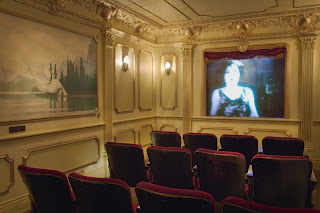Chaperones are critical to school programs at the museum. they are often required to drive the students to the museum and then once here we ask them to help with the education program. But how? Do the chaperones feel comfortable in their role - if they even know what it is?
There have been many studies on how text, labels and exhibition layout can affect learning, but not so many on the the role and effectiveness of chaperones. During my recent preparation for school program training I've read some interesting case studies including one by Elizabeth Wood. Her 2010 article "Defining the Chaperone's Role as Escort, Educator or Parent" suggests that chaperones behave in these three ways. I have often thought of them as escorts but the idea of treating school program groups more like family groups really struck me.

Considering that chaperones with school program groups are often parents or close family relatives, it seems natural that they would want to interact with the students as well as monitor them. If I were in the gallery interacting with a family I would ask the parents and the children questions and I would also answer questions from the adults while still focusing on the children. Why not do that with school groups?
Chaperones in school program groups can sometimes cause distraction by talking amongst themselves, wandering off or answering questions before students have had time to think about an answer. In school program training this year, I am suggesting to the docents that we welcome chaperones early on - not only as escorts but as participants. Instead of reminding them not to interrupt the program, let's invite them to participate - and when they do participate, let's turn it back to the kids. By acknowledging chaperones and inviting them to learn with us, we may be able to reduce some of the distracting behavior that can take place but more importantly we may be able to increase the learning that happens for everyone in the program.
Have you been a chaperone on a school trip or have you worked with school program groups in a museum? Do you think this approach will work?















